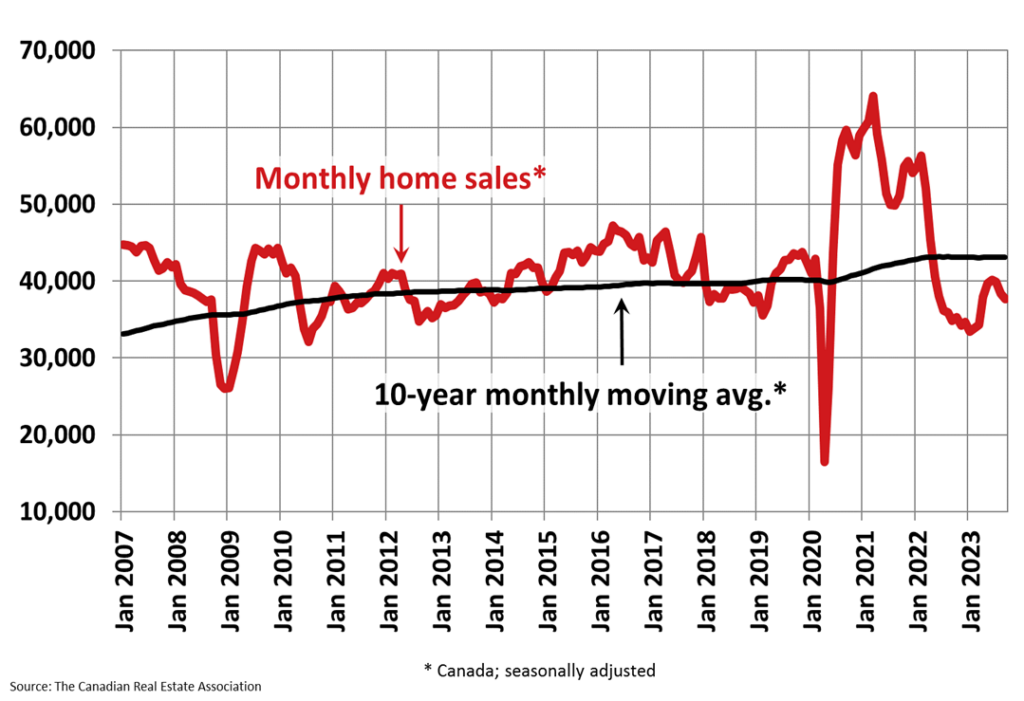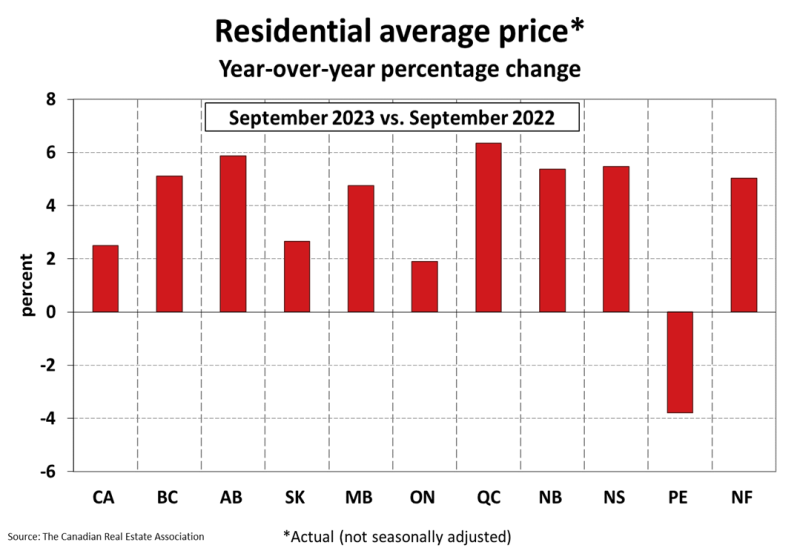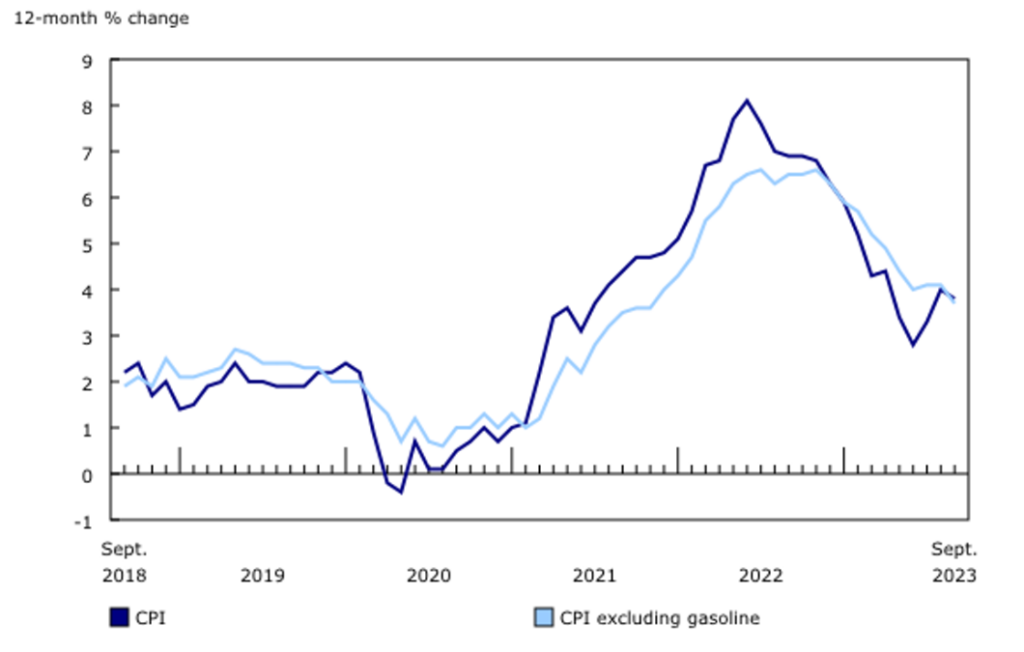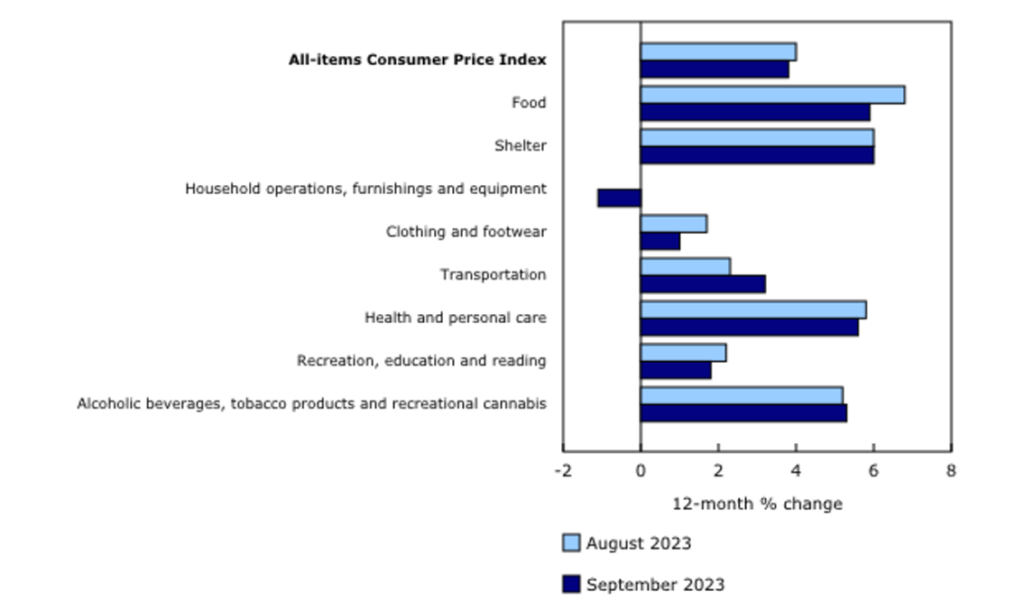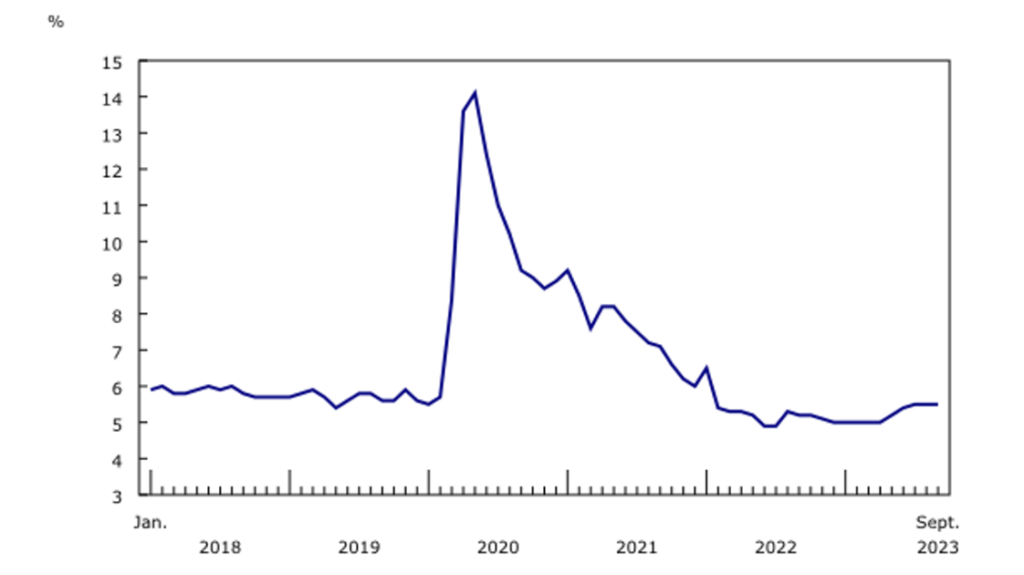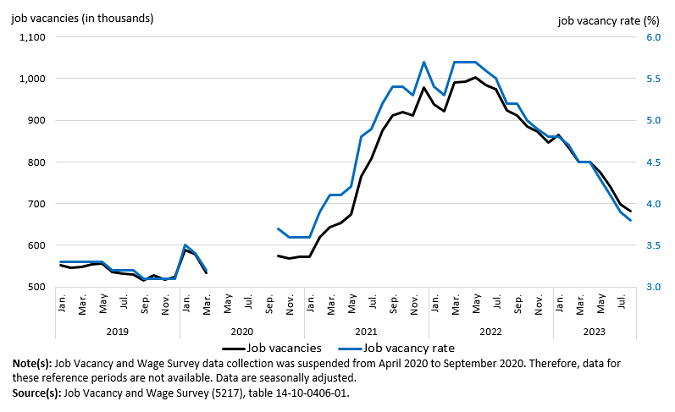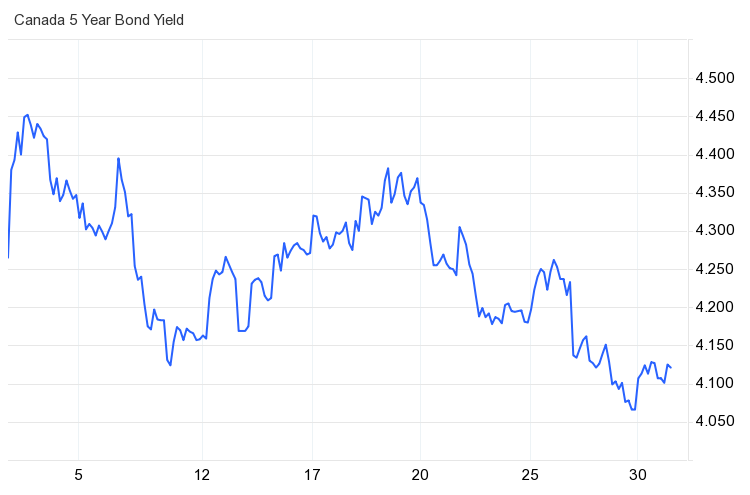Read the 2024 interest rate forecast.
Save money on your mortgage
Don’t leave money on the table
Don’t just go with your bank
Get today’s best rates from our lenders
The Bank of Canada has decided to hold their key interest rate steady at 5.00% once again during the latest rate announcement on October 25. The long-term variable mortgage rate is holding steady at 5%, which is roughly 1% below the current market mortgage rate. This reaffirms that markets expect rates to stay higher for longer. Let’s take a look at the latest in the mortgage world going into November.
Key Takeaways
- The Bank of Canada has paused rate hikes for the time being, with the last interest rate announcement for 2023 coming in December.
- Our current long term interest rate forecast has migrated upwards to around 5.00%.
- For buyers, there are great opportunities in the market, but inventory is low across the board.
- Today’s best mortgage rates are 5.65% for 5-year fixed and 6.00% for 5-year variable.
- For homeowners coming up for renewal, continue to monitor our rate forecast and avoid taking the first offer from your existing lender, as they're typically less competitive.
Here's the latest new in the mortgage world for November:
For the month of November, we anticipate fixed and variable rates will remain the same. National sales activity edged down further in September by 1.9% month over month, remaining on trend with July and August’s declining sales activity. The number of new supply has inversely steadily increased, Canada’s inventory edged up by a further 6.3% month over month in September. Sales activity has officially tapered off and inventory is now on a steady incline, thus the sales-to-new listings ratio eased to 51.4% in September, which is in line with its long-term average, in comparison, this ratio peaked at 67.8% in April. “With the inventory of homes for sale still historically low amid huge demand for housing in Canada, what happens next will depend on interest rates. Whether that means uncertainty about the possibility of further hikes, or just the cost of borrowing money right now, neither of these will be resolved for would-be buyers anytime soon. As such, expect a quieter than normal winter with all eyes on the Bank of Canada. We’ll see how buyers are feeling when the snow starts to melt.” said Shaun Cathcart, CREA’s Senior Economist.
Home prices are dipping
The Aggregate Composite MLS Home Price Index edged down by 0.3% on a month-over-month basis in September, however it is up 1.1% year-over-year. We’re now heading towards the expected drop in home prices as both higher interest rates and increased inventory apply downward pressure on pricing across Canada. The actual (not seasonally adjusted) national average home price was $655,507 in September, up 2.5% year over year.
The Bank of Canada is continuing to hold interest rates steady
On October 25th, The Bank of Canada published their Monetary Policy Report accompanied by decision to hold their Policy interest rate at 5%. With only one interest rate announcement left in 2023, the market is pricing in the chance of one more 0.25% raise in the short term. There has been an increase of 75 basis points to the Bank of Canada’s overnight lending rate in 2023, a notable but small increase in comparison to 2022’s 400 basis point run. The Central Bank believes there’s now sufficient evidence pointing to slowing demand and increased probability of a recession, lead by slower consumption growth and a decline in housing activity, while still maintaining their hawkish and precautionary stance. Longer term the Central Bank projects the economy will continue to cool down, bringing inflation back to its two per cent target some time in early 2025. The latest economic data is looking pessimistic leading to the market expecting rate cuts as early as Q2 2024.
The economy is slowing with predictions of a recession by economists
The latest economic data indicates that following the past years rate hikes from the Bank of Canada the Canadian economy is slowing as expected. Canada's GDP was flat in August 2023 according to the latest data from Stats Canada released on October 31. This is the second consecutive month of no GDP growth and is leading to predictions that we may have already entered into a recession which is typically defined by multiple months of stagnant or negative economic growth.
Key Terms:
GDP: GDP or Gross Domestic Product refers to the total dollar amount of goods and services produced in a country. It is an overall measure of the strength of our economy.
CPI: The CPI or Consumer Price Index is a measure of inflation tracked by Statistics Canada. It attempts to track the spending habits of the average consumer with a basket of typical goods and services.
Inflation trends down, but remains above target
September’s consumer price index, the measure for year over year inflation, came in at +3.8%, following a 4% year over year increase in August. September’s drop was mainly driven by a month over month drop in gasoline prices (-1.3%). Canadians continued to battle elevated shelter costs (+6%) and mortgage interest costs (+30.6%) in September and beyond, notably, mortgage interest rates has been and continues to apply the highest upward pressure on the CPI since December of 2022.
The Central Bank sees tightening household discretionary spending as their most viable tool to halt consumer spending on goods and services and attain their 2% inflation target. CPI will continue to hold near the 3% mark in October, of course, when not accounting for mortgage interest cost, the next slated CPI announcement will be on November 21.
Job vacancies and Unemployment Rates
Following an increase of 40,000 job in August, Canada’s employment rose by a further 64,000 jobs in September, led by a seasonal surge in education workers (+66,000; +4.5%) and an increase in transportation and warehousing (+19,000; +1.8%). The job gains were offset by decreases in finance, insurance, real estate, rental and leasing, construction, and information, culture and recreation. While the Job market added more than double what was expected by Senior Economists, 48,000 jobs were part-time. Statistics Canada’s report highlights that the increase in employment was outpaced by a burst in population growth (+82,000), of them, 72,000 are of working age, and actively looking for employment, qualifying them as active participants in the labour force. Canada’s continued increase in newcomers has been the biggest prop up to our job market, this has essentially stalled the unemployment rate, which remained unchanged in September at 5.5% for the third consecutive month.
Job vacancies continued to decline, by 43,100 in the July, there were 1.7 unemployed persons for every job vacancy in Canada, a month over month increase of 0.2%, indicating the labour market tightness has eased, which will reduce upward pressure on wage growth.
Strong population growth continues to fuel demand
The Bank of Canada continues to warn that strong population growth is supporting aggregate consumption and employment growth, according to their July Monetary Policy Report, “Strong population growth from immigration is adding both demand and supply to the economy: newcomers are helping to ease the shortage of workers while also boosting consumer spending and adding to demand for housing.” Ottawa plans to accept 465,000 permanent residents into the country in 2023, with the immigration target growing to 500,000 in 2025. Many of those arriving in Canada’s major markets are searching for shelter amidst the home unaffordability crisis, driving up rental cost (+6.5%) in August. Provinces rely heavily on Canadian investors to supply rental apartments in the form of investment homes, however, as higher interest rates and mortgage costs have worked to deter existing and would be landlords, the supply of rentals has steadily declined which has driven up rents across the country.
Recommended reading: How does population affect the housing market?
Bond yields retrace their gains
Canada’s 5-year bond yields have dropped nearly 30 basis points since they reached 16-year highs during the month of October. Canada's mortgage rates tend to track five-year bond yields at a premium and with a lag. Yields jumped due to a growing consensus of interest rates remaining elevated long than anticipated and a hard Canadian recession fears all but diminished.
If you’re looking to buy a home in Canada:
For first-time home buyers, there are some great opportunities outside of core markets, sellers are coming to terms with tapering price growth as higher interest rates bar many from entering the market, however, inventory is still low, so we’re not at a balanced market quite yet.
For homeowners who are coming up for a mortgage renewal, continue to monitor our rate forecasts, it would be wise to see what rates Perch may be able to offer above and beyond your existing Lender, as they’re typically less aggressive on their rate offerings.
For homeowners who would like to see the benefit of switching lenders and breaking their mortgage early, Perch automatically calculates the net benefit once you input your existing property and mortgage details in your Perch portfolio.
 Ali
Ali
